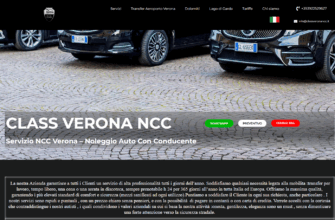Suspects in Louvre robbery arrested in France. One of them attempted to leave the country.
French police announced the arrest of several individuals linked to the robbery at the Louvre, and investigators say one of the suspects tried to cross a border to escape. Official statements have been cautious on specifics, but the broad contours — a swift police operation, coordinated checks at points of exit, and close collaboration with national and European authorities — have been made public.
- The immediate police response and how the arrests unfolded
- How a suspect’s attempt to flee is detected and stopped
- What the Louvre and prosecutors have said so far
- Investigative tools and forensic methods used in art theft cases
- Why museums remain vulnerable despite tight security
- Historical perspective: notable art thefts and what they teach us
- Who’s involved in a case like this: roles and responsibilities
- Possible legal outcomes and penalties
- Insurance, valuation, and the cost of recovery
- How this impacts public access and museum operations
- Personal perspective: a visitor’s view of security at the Louvre
- Lessons going forward and how the public can help
- Further reading and ways to stay informed
The immediate police response and how the arrests unfolded
When a high-profile theft touches a symbol like the Louvre, the investigative clock starts ticking immediately. Law enforcement typically mobilizes local brigades, national police units, and sometimes specialized teams focused on cultural property.
In this case, sources indicate that the arrests followed rapid information-sharing between museum security, Paris police, and border control agents. Officers used surveillance footage, witness statements, and digital forensics to identify suspects and trace movements linked to the scene.
One of the individuals was reportedly intercepted while attempting to leave France. Border checks, international alerts, and coordination with neighboring countries are often decisive in preventing flight from jurisdiction.
How a suspect’s attempt to flee is detected and stopped
Trying to leave a Schengen country is not as simple as booking a ticket and walking onto a train. Airports, train stations, and road checkpoints all have access to police alerts and watchlists that can flag suspicious travelers in real time.
Authorities commonly issue immediate notices to border posts — sometimes under a judicial warrant or a formal “lookout” — instructing officers to detain specific individuals. In international cases, Interpol red notices or alerts through European law-enforcement systems speed cross-border cooperation.
In addition to documentary checks, modern investigations rely heavily on digital footprints: cellphone pings, travel bookings, and social media activity can reveal attempts to move quickly. This blend of classic policing and digital tracking often makes it hard for suspects to slip away once identified.
What the Louvre and prosecutors have said so far

Museum officials typically limit public detail during an active investigation, mindful of both security and legal processes. Statements generally confirm cooperation with police and express relief that suspects are in custody, while stressing the protection of the collection.
Prosecutors, when they speak publicly, lay out the charges they intend to bring and the evidence they believe supports them. Early press releases can be sparse, but they often emphasize the cultural and historical value of the stolen items and the criminal gravity of the act.
Legal measures may include pretrial detention, seizure of assets tied to the crime, and requests for search warrants to explore connections between suspects, fences, and storage locations. France has experienced high-profile art crime prosecutions in the past and is equipped with specialized investigative units for such cases.
Investigative tools and forensic methods used in art theft cases
Forensics in art theft goes beyond fingerprints. Investigators examine tool marks on display fixtures, fibers, and DNA traces. They also scrutinize surveillance systems, looking for gaps and synchronizing footage across multiple cameras.
Digital forensics are equally vital. Emails, messaging apps, and encrypted chats can reveal planning and logistics. Financial records — withdrawals, sudden purchases, or suspicious transfers — often provide clues about fences and networks involved in selling stolen works.
When one suspect attempts to flee the country, those digital traces can give investigators precise timestamps and locations, enabling swift coordination with border authorities to intercept movement before it crosses international lines.
Why museums remain vulnerable despite tight security
Museums like the Louvre invest heavily in guards, alarms, and reinforced display cases, but human behavior and ingenuity create vulnerabilities. Thieves sometimes exploit moments of distraction, maintenance gaps, or the sheer density of visitors to mask illicit activity.
Large galleries present particular challenges: high foot traffic, numerous entry points, and the need to balance accessibility with protection. Even with visible security, the volume of people in front of a masterpiece can make it difficult to single out suspicious behavior instantly.
Security upgrades often follow high-profile incidents, but the balance between openness for public enjoyment and the need to protect priceless art is a constant managerial puzzle for museum directors worldwide.
Historical perspective: notable art thefts and what they teach us
Lessons from past heists remain instructive. The 1911 theft of the Mona Lisa — when an employee walked the painting out under false pretenses — taught museums about access controls and internal trust. The 1990 Isabella Stewart Gardner Museum theft in Boston, still unsolved, exposed how organized thefts can exploit delivery systems and caretaker routines.
That history shows that perpetrators range from opportunistic individuals to sophisticated networks. Recovery rates for stolen art vary widely; in many cases, cultural objects resurface only after years in private hands or through sting operations targeting buyers and smugglers.
These precedents influence how modern institutions and police craft preventative strategies and how prosecutors present the seriousness of cultural property crimes in court.
Who’s involved in a case like this: roles and responsibilities
Several actors play essential roles after a museum robbery. Local police secure the scene and gather physical evidence. National judicial authorities take over for criminal prosecution and complex searches. Museum curators support identification of stolen pieces and documentation of provenance.
International bodies can also become involved: Interpol circulates notices and works with customs agencies, while UNESCO and cultural heritage organizations may offer expertise on recovery and repatriation. Private investigators and art recovery specialists sometimes assist insurers or collectors seeking to trace objects.
Below is a simple outline of the kinds of institutions typically engaged in an incident involving a major museum theft.
| Entity | Primary role |
|---|---|
| Local police | Crime scene, witness interviews, arrests |
| National prosecutors | Legal charges, warrants, pretrial detention |
| Museum security | Immediate response, footage, artifact inventory |
| Customs and border control | Interception of outbound movement, inspections |
| Interpol/Europol | Cross-border alerts, coordination with foreign law enforcement |
Possible legal outcomes and penalties
Penalties for art theft in France can be substantial, including prison time and heavy fines, especially when the stolen items are recognized as national treasures. Sentences depend on the severity of the crime, whether organized crime structures are involved, and if other offenses — such as trafficking or fraud — are proven.
Judicial proceedings may be lengthy. Prosecutors need to build airtight cases showing intent, participation, and sometimes the involvement of a wider criminal network. Defense lawyers, conversely, often seek to challenge evidence collection methods or the chain of custody of recovered items.
Recovered artifacts are typically returned to the museum, but there can be complex legal disputes over ownership if third-party buyers claim to have acquired pieces in good faith.
Insurance, valuation, and the cost of recovery
Museums carry insurance policies that cover theft and damage, but high-value artwork can still involve complex claims processes. Valuation is not only monetary; cultural loss and reputation damage factor into recovery strategies and compensation negotiations.
Insurance companies may hire private recovery teams and negotiate with law enforcement to facilitate safe recoveries. In some cases, recovered items show signs of damage that complicate restoration and reduce their market value.
There’s also the intangible cost: thefts erode public trust and require additional spending on security, staff training, and technological upgrades that strain museum budgets.
How this impacts public access and museum operations
After a robbery, museums often reassess visitor flows, increase surveillance, and occasionally close galleries temporarily. These measures can inconvenience the public but are designed to prevent future incidents and reassure visitors about safety.
Curators and educators may also mount public information campaigns to contextualize the theft and explain steps taken to protect the collection. Transparency helps maintain public confidence while balancing the need to preserve investigative integrity.
Long-term, institutions may rethink exhibit design and how they present vulnerable objects without turning galleries into fortresses.
Personal perspective: a visitor’s view of security at the Louvre
I’ve spent many afternoons at the Louvre, watching crowds drift past centuries of art. The presence of uniformed guards and visible camera arrays creates a reassuring backdrop, but it’s easy to forget the invisible work — risk assessments, off-site storage, and discreet vigilance — that keeps those pieces safe.
That everyday impression of care is why a theft feels so jarring. It’s not only the loss of an object; it’s a breach of the quiet contract between museums and the public: that cultural treasures will be preserved and made accessible for future generations.
When I visit now, I notice small changes — security tags, subtle barriers, new signage — reminders that museums continuously adapt to protect what they steward.
Lessons going forward and how the public can help
High-profile arrests remind the public that protecting cultural heritage is a shared responsibility. Visitors can help by reporting suspicious behavior, following museum rules, and treating displays with respect. Simple vigilance can be a helpful supplement to formal security measures.
Museums should continue investing in training for staff, modern surveillance, and community outreach to balance access with protection. Policymakers can support these efforts through funding and by strengthening cross-border cooperation to deter the trafficking of stolen works.
Ultimately, the recent arrests — and the failed attempt of one suspect to flee — underscore the effectiveness of coordinated policing and the value of quick international communication in preserving cultural heritage.
Further reading and ways to stay informed
To follow developments in this case, reliable sources include official statements from the French judiciary, press releases from the Louvre, and reputable news organizations that corroborate information with primary documents or court filings.
For those interested in art crime, several books and documentaries examine past heists and the forensic techniques used to solve them. These resources deepen understanding of why museums are targeted and how global efforts can bring stolen art back into the public domain.
If you want more coverage and analysis, visit our site for continuing updates and context-rich reporting.
Read more and explore related articles at https://themors.com/ — we publish ongoing material about cultural heritage, security, and the legal processes that follow high-profile crimes.









